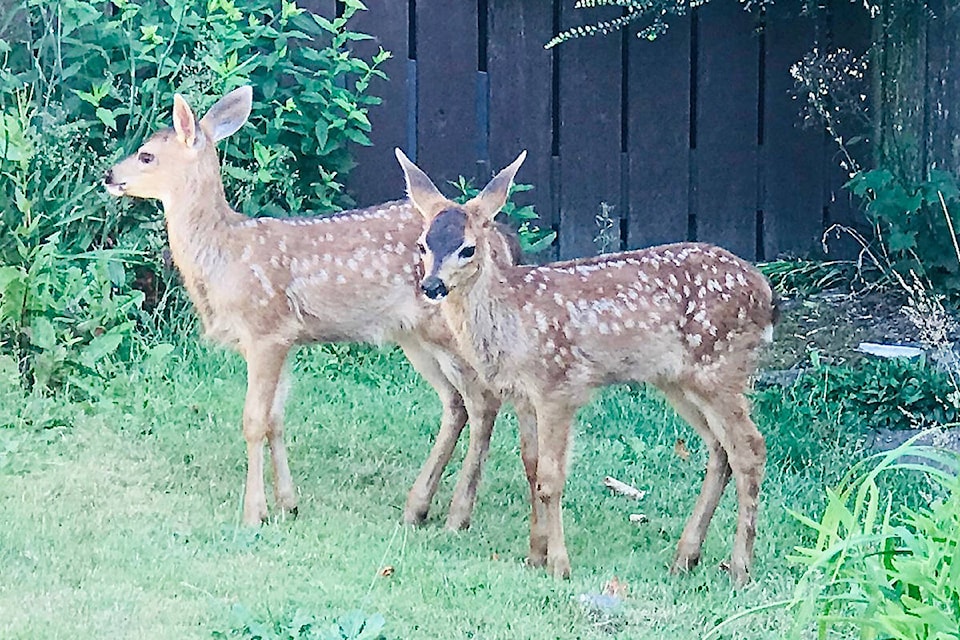As the weather warms and those spring showers grow fewer, more of us will hit local paths, trails and roadways. But humans aren’t the only ones exploring further from “home.”
Spring also brings the start of fawning season, meaning it’s time to pay a little more attention as you drive, cycle and stroll local neighbourhoods, says Kristy Kilpatrick, from the Urban Wildlife Stewardship Society, working with the Township of Esquimalt on deer management, in addition to undertaking a research and deer contraception program in Oak Bay.
The good news is that following a few simple steps will help minimize the likelihood of conflicts with our urban wildlife:
If you find a fawn, DO leave it alone – Does shelter fawns from predators, leaving for long periods to forage, then returning to let fawns to suckle. Fawns are born without scent, and for the first few weeks, does may feed and sleep a considerable distance away to reduce the chance of attracting predators.
Wildlife centres like the BC SPCA’s WildARC field numerous calls each spring from people who’ve found an “orphaned” fawn, but typically advise residents to leave it alone – the mother is likely nearby and will return once you leave.
If the fawn appears cold, weak, thin, injured, is bleating repetitively, or if the mother has not returned to a seemingly healthy fawn for more than eight hours, call WildARC. DO NOT remove the fawn on your own – if you’ve inadvertently handled the animal, rub an old towel on the grass, then gently wipe the fawn down to remove human scent.
DO keep your distance – Remember that does often act in a protective manner if you’re near a fawn – even if you can’t see it. If a doe seems to follow you, try changing direction as you may be unknowingly walking toward a hidden fawn.
DO keep your dogs close – In addition to keeping distance between you and the deer, it’s also important to keep your dog close, Kilpatrick advises. It’s important to understand that deer perceive dogs as a threat, so keeping them leashed and walking near you will help prevent unwanted interactions.
DO be alert – Whether startled by people, dogs, traffic deer often appear suddenly. Like many animals, they’re also more active at dawn and dusk, at the very time it’s more difficult to see them. Reduce your chance of colliding with a deer by slowing down and scanning ahead, especially in areas deer are known to frequent.
DO watch for fawns – As fawns grow a little older, they’ll begin foraging with their mother, but they also lack “street sense.” That means fawns can be more likely to dart into your path, not recognizing bikes or vehicles as a threat, or be more tentative. The result is unpredictable behaviour that drivers and cyclists need to do their best to predict. And remember, if you see one deer, chances are more are nearby.
Deer Management in Esquimalt
The Township of Esquimalt is working on the next steps in its deer management program, and is currently awaiting provincial permits to build on research currently underway in Oak Bay.
For information about deer management in Esquimalt, visit esquimalt.ca/government-bylaws/animal-control/deer. For more tips about living with urban deer, visit uwss.ca.
